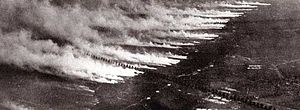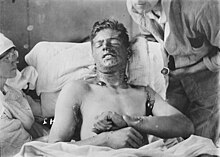QUIZ
1.
Nakoda at Rajasthan, which is famous for miracles at Nakodaji, is a temple of
which among the following ?
(A) Vishnu
(B) Krishna
(C) Parsvanath
(D) Shiva
2.
During the 1857 Mutiny, who among the following was Governor General of India?
(A) Lord Canning
(B) Lord Elgin
(C) Lord Dalhousie
(D) Lord Elleborough
3. The
five permanent members of the U.N. Security Council
are–
(A) China, France, Russia, UK and U.S.A.
(B) China, Canada, France, US.A. and Germany
(C) China, Germany, Russia, UK and U.S.A.
(D) China, Germany, U.S.A., UK and Canada
4. Which
of the following was used as a chemical weapon in
the
First World War?
(A) Mustard gas
(B) Water gas
(C) Hydrogen cyanide
(D) Carbon monoxide
5.
Connection or link to other documents or Web Pages that
contain
related information is called–
(A) dial-up
(B) electronic commerce
(C) hyperlink
(D) e-cash
Answers
1.
Nakoda at Rajasthan, which is famous for miracles at Nakodaji, is a temple of
which among the following ?
(C) Parsvanath....
Nakoda
Mewanagar is a village in the Barmer District of Indian state of Rajasthan. The
village name is Mewanagar in the Rajasthan state Government records.This
village was known by the names of Nagara, Viramapura and Maheva at different
times in the history. When Nakoda Parsva Jain temple was made this village
gained popularity by the name of Nakoda. Nakoda is a holy place of the Jains.Mulnayak
is a nearly 58 cm high black-colored idol of Parshva in the lotus position.
Today Nakodaji is world-wide famous for miracles at Nakodaji.
2.
During the 1857 Mutiny, who among the following was Governor General of India?
(A) Lord Canning.....
Charles
John Canning, 1st Earl Canning (14 December 1812 – 17 June 1862), known as The
Viscount Canning from 1837 to 1859, was an English statesman and
Governor-General of India during the Indian Rebellion of 1857.
3. The
five permanent members of the U.N. Security Council
are–
(A) China, France, Russia, UK and U.S.A. .....
The
United Nations Security Council (UNSC) is one of the six principal organs of the
United Nations and is charged with the maintenance of international peace and
security. Its powers include the establishment of peacekeeping operations, the
establishment of international sanctions, and the authorization of military
action through Security Council resolutions; it is the only UN body with the
authority to issue binding resolutions to member states. The Security Council
held its first session on 17 January 1946.At the UN's founding in 1946, the
five permanent members of the Security Council were the Republic of China, the
French Republic, the Soviet Union, the United Kingdom, and the United States.
4. Which
of the following was used as a chemical weapon in
the
First World War?
(A) Mustard gas....
The most
widely-reported and, perhaps, the most effective gas of the First World War was
mustard gas. It was a vesicant that was introduced by Germany in July 1917
prior to the Third Battle of Ypres.
Mustard
gas is not a particularly effective killing agent (though in high enough doses
it is fatal) but can be used to harass and disable the enemy and pollute the
battlefield. Delivered in artillery shells, mustard gas was heavier than air,
and it settled to the ground as an oily liquid resembling sherry. Once in the
soil, mustard gas remained active for several days, weeks, or even months, depending
on the weather conditions
5.
Connection or link to other documents or Web Pages that
contain
related information is called–
(C) hyperlink...
In
computing, a hyperlink is a reference to data that the reader can directly
follow either by clicking or by hovering or that is followed automatically. A
hyperlink points to a whole document or to a specific element within a
document. Hypertext is text with hyperlinks.










.jpg/310px-Vegetable_lamb_(Lee%2C_1887).jpg)